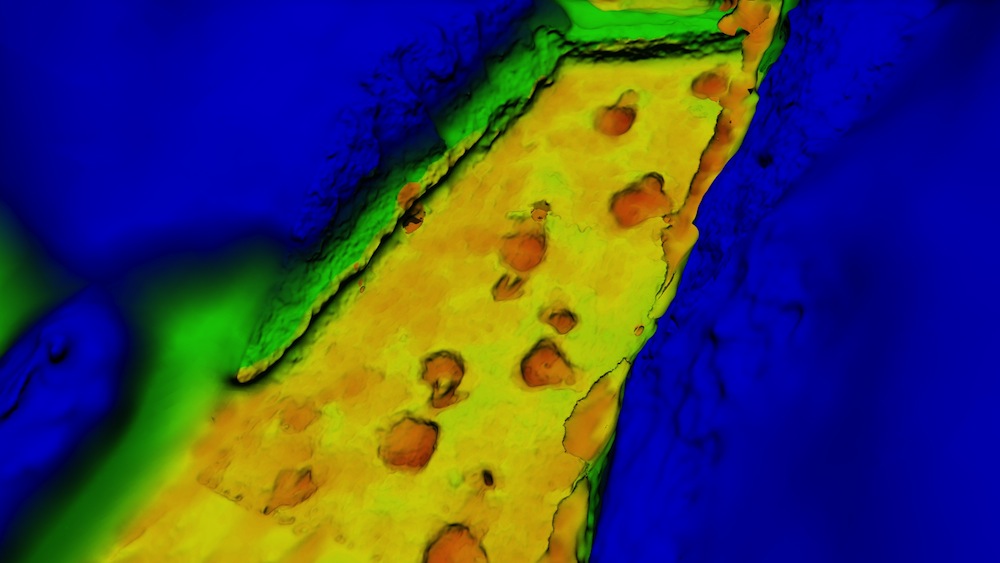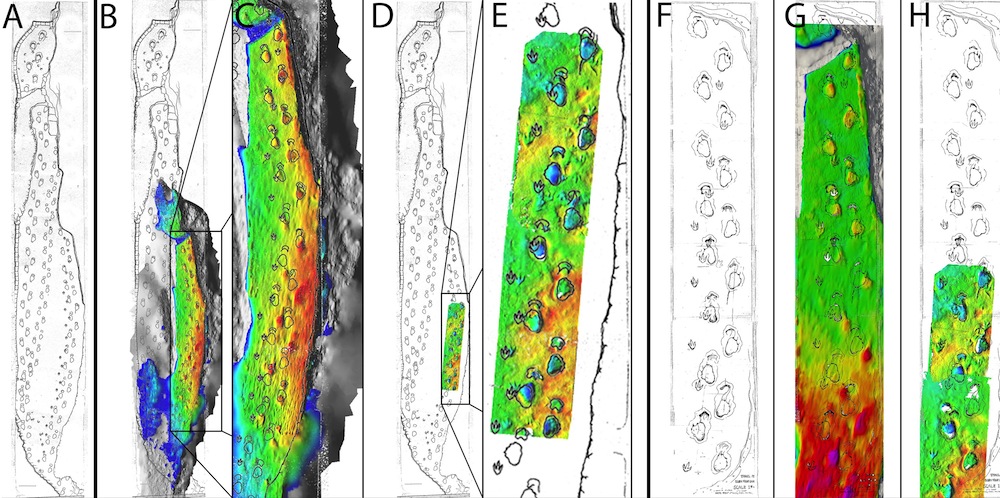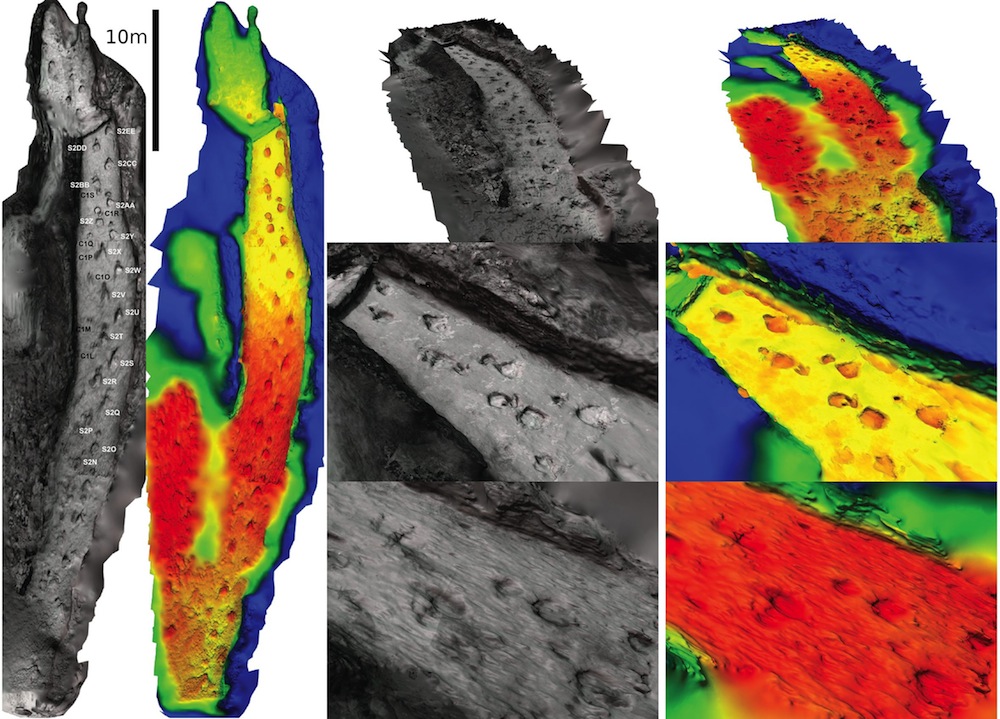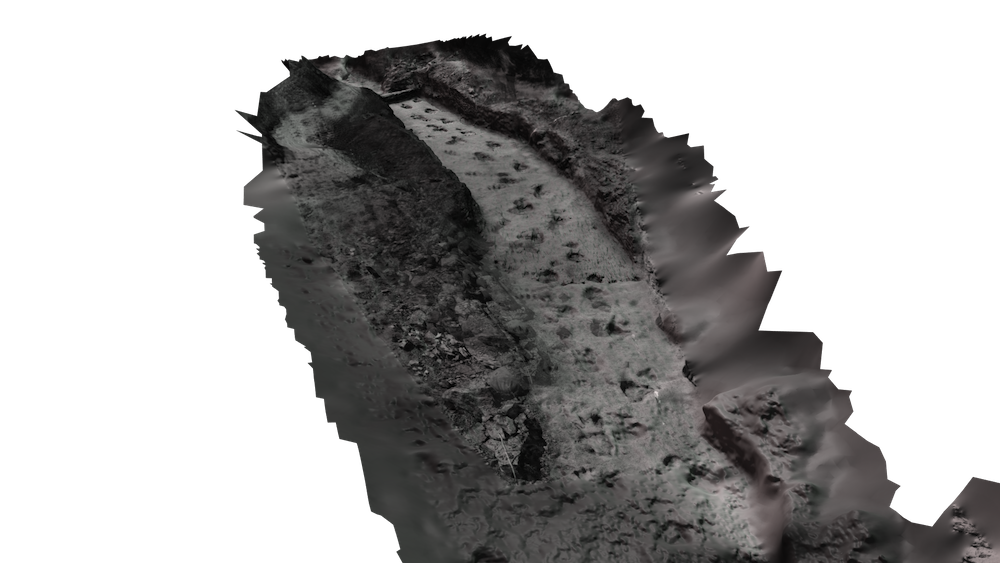Gallery: Reconstructed Dinosaur 'Chase'
Dinosaur Tracks

A 3D reconstruction of a dinosaur trackway from Texas shows a sauropod followed by a theropod -- though it's not clear that the theropod was really right on the first dinosaur's tail.
Dinosaur Track Maps

Fossil collector Roland T. Bird excavated much of the trackway in 1940, and sections were sent to the American Museum of Natural History and the Texas Memorial Museum. Other sections were lost. Now, researchers have reconstructed the trackway from Bird's photographs. Here, the reconstruction lines up with Bird's hand-drawn maps.
Track Depth

Old photographs of the track site were analyzed using a method called photogrammetry, which allows researchers to create 3D images with depth from 2D pictures.
Paluxy River Tracks

Original hand-drawn maps of the tracks, which were found near the Paluxy River in central Texas.
Track Reconstruction

Black-and-white and color reconstructions of the trackway, which shows the prints of a sauropod and theropod.
Single Trackway

An isolated view of the dinosaur trackway from the Paluxy River site.
Get the world’s most fascinating discoveries delivered straight to your inbox.

Stephanie Pappas is a contributing writer for Live Science, covering topics ranging from geoscience to archaeology to the human brain and behavior. She was previously a senior writer for Live Science but is now a freelancer based in Denver, Colorado, and regularly contributes to Scientific American and The Monitor, the monthly magazine of the American Psychological Association. Stephanie received a bachelor's degree in psychology from the University of South Carolina and a graduate certificate in science communication from the University of California, Santa Cruz.
 Live Science Plus
Live Science Plus





